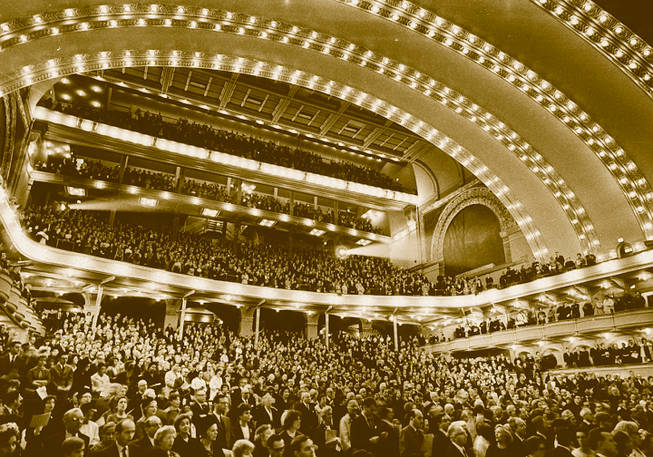


"Reconstructing Italians in Chicago" is a captivating collection of writing by current and former Chicagoans of Italian descent. The book covers a wide range of topics. Some are autobiographical, some are historical accounts, and all come together to form a picture of the Chicago area's vibrant Italian community.
The book is dedicated to the late and greatly missed Rudolph J. Vecoli, the former director of the Immigration History Research Center at the University of Minnesota [2]. Rudy was a kind and gentle man who knew Italian Chicago like the back of his hand. He reached out to other ethnic groups to preserve their history, encouraging many young scholars and writers along the way. "Reconstructing Italian Chicago" is a fitting memorial to this giant of the historical profession.
The two editors are well-known scholars of Italian America, and both are well known to the readers of Fra Noi [3] as well as i-Italy. The historian, Dominic Candeloro, is the former director of the groundbreaking Italians in Chicago Project (1979-1981) [4] and currently serves as curator of the library at the Italian Cultural Center [5]. (His blogs on i-Italy is entited "Roots and Branches. [6]") Fred L. Gardaphe is the much-published Distinguished Professor of Italian American Studies and English at Queens College's John D. Calandra Italian American Institute [7], City University of New York, and an associate editor at Fra Noi. (He is a member of the Editorial Board of i-Italy where he has a blog called "Nota Bene. [8]") Both grew up in Chicago's suburban Italian communities and bring a lifelong interest to the topic.
The book does a great service in highlighting not only 30 authors who have done so much to preserve the story of the Italian community. As Candeloro points out, there was never just one Little Italy in Chicago. While most Chicagoans automatically turn to Taylor Street on the Near West Side when thinking of the city's Italian past, Candeloro points to 11 city neighborhoods and suburbs where large numbers of Italians settled, from Highwood to the north and Chicago Heights to the south and Melrose Park to the west.
Nuggets of Chicago's history appear throughout the book. Robert Lombardo's account of "Little Sicily," later the site of the infamous Cabrini-Green Housing Project [9], recalls a period in the city's history when Sicilian immigrants came to live in the area once know as "Little Hell," a name taken from the gas house at Crosby and Hobbie streets. Here the Servite parish of St. Philip Benizi [10]provided an anchor for the community. The traditional Feast of Maria SS Lauretana, once held at St. Philips, is still maintained every year in Berwyn to the west of Chicago.
Not only are the various Italian settlements in the Chicago area covered in this important book, but so are the waves of Italian immigration to the city. A short piece by the musician and radio personality Paolo Ciminello recounts his arrival in Melrose Park from Campofelice, Sicily, in 1956. Others talk of growing up as second- and third-generation Italian Americans in a vibrant ethnic community. Many of these accounts are very personal, but here the reader touches what is most authentic in the community. This enjoyable and well-written book is a valuable contribution to the study not only of Chicago's many Little Italys, but to the history of the city and its fascinating ethnic neighborhoods and suburbs.
* * *
From the back cover: "There is something for everybody in this eclectic volume. Every reader will find a topic or a writer that s/he wants to know more about. Publication of Reconstructing Italians in Chicago is a major step toward making Chicago’s Italians the best documented (and best understood) in the nation. It is a gateway to both the academic and the personal exploration of Italians in Chicago, loaded with references that lead the reader to just about every source of information on the subject.
“With the publication of this Anthology edited by Dominic Candeloro and Fred Gardaphe’ CHICAGO'S ITALIAN AMERICANS HAVE DONE IT AGAIN--they have demonstrated their vibrancy and exuberance in recalling and honoring the impact of the ethnic community.
Eschewing filio-pietism, this compilation has heeded the canons of historicism of Rudolph Vecoli--the first president of the American Italian Historical Association [11]..”
Salvatore J. LaGumina, Ph. D. Director, Center for Italian American Studies, Nassau Community College.
The writers represented in this Anthology include: Leonard Amari, M. Antonucci, Tony Ardizzone, Robert Benedetti, Adria Bernardi, Dominic Candeloro, Kathy Catrambone Ellen Shubart, Paolo Ciminello, Jerry Colangelo, David Cowan /John Kuenster, Bill Dal Cerro, Lisi Cipriani, Peter D’Agostino, Fr. Gino Dalpiaz, Tina DeRosa, Annette Dixon, Chickie Farella, Anthony Fornelli, Fred Gardaphe’ Thomas Guglielmo, Billy Lombardo, Calogero Lombardo, Robert Lombardo, Ernesto R Milani, Rose Ann Rabiola Miele, Gloria Nardini, Daniel Niemiec, Gianna Panofsky/ Eugene Miller, Peter Pero, Tony Romano, Vince Romano, Judy Santacaterina, G. Schiavo, Anthony Sorrentino, Rudolph Vecoli, & Peter Venturelli.
* * *
*Dominic Pacyga is professor of History at Columbia College Chicago and author of Chicago: A Biography [12]. This Review appeared in the February 2012 Edition of Fra Noi [13]. Reprinted with permission.
Source URL: http://440468.6bgr9ubv.asia/magazine/focus/art-culture/article/thirty-authors-in-search-roots-and-branches
Links
[1] http://440468.6bgr9ubv.asia/files/chicago21328321845jpg
[2] http://www.ihrc.umn.edu
[3] http://www.franoi.com/
[4] http://www.library.illinois.edu/ihx/archon/?p=collections/controlcard&id=740
[5] http://www.casaitaliachicago.net
[6] http://www.i-italy.org/bloggers/roots-and-branches
[7] http://calandra.i-italy.org/
[8] http://www.i-italy.org/bloggers/nota-bene
[9] http://cabrini-green.com
[10] http://www.stphilipbenizi.org
[11] http://www.aihaweb.org
[12] http://press.uchicago.edu/ucp/books/book/chicago/C/bo7877998.html
[13] http://www.franoi.com